Planning your transportation in Peru is not always an obvious matter — especially if it’s your first time in this incredible Andean nation.
Things generally work a bit differently in South America. And the various modes of transport, the mountainous geography, and potential language barriers can lead to a fair bit of head-scratching and anxiety when getting from A to B — or at least, if you come unprepared!
In this guide, I’ll take out all of the guesswork out of exploring Peru. Having travelled and been based in Peru long-term, I’ll share everything you need to know to connect all the dots in your itinerary.
Getting into Peru
By air
The large majority of travellers arriving into Peru will do so by plane.
The Jorge Chávez International Airport is one of the largest and best connected in all of South America, which welcomes flights from all over the world daily (it’s quite easy to find direct flights here too).
The best routes for those coming from elsewhere in the continent are from Bogotá, Santiago and São Paulo. From North America it’s best to fly from Panama City, Mexico City or Miami.
Travellers from Europe will want to fly from Madrid, which is the overall cheapest hub for flights heading to Lima.
Whilst other countries have other major cities you can fly directly into, in the case of Peru it’s just Lima. If your final destination is elsewhere, you’ll then need to hop on a connecting flight or take the bus.
By land
Those who are already on a journey through South America can also enter Peru by bus.
3 countries have land borders with Peru: Ecuador, Bolivia and Chile (Colombia and Brazil also border Peru, but it’s impossible to travel by land).
Travellers in Ecuador can head south to the town of Huaquillas, and then cross over into Tumbes. It’s a popular crossing route, however I recommend doing it during the day since it can get quite unsafe after dark.
From Bolivia, it’s easiest to head to Copacabana, which lies on the shores of Lake Titicaca. From here you can take a bus to Puno, which is a major stop along the popular southern loop of Peru.
Those who have been travelling through Chile can head to Arica in the far north, and then cross over into Tacna. From here you can easily catch a bus to Arequipa or Puno.
By boat
The final (and least common) way of arriving in Peru is by boat.
Between Peru and Brazil lies a large swatch of Amazon Jungle, and those in this neighbouring country can take a river boat from Tabatinga to Iquitos.
The ride will take either 12 hours or a few days depending on which option you pick (they have a faster ferry as well as a slow boat).
Whilst not the most practical, it’s definitely one for the true adventurer as you’ll travel through the deep jungle and get to see endemic wildlife along the way.
There are also cruise ships that travel along the Pacific that make stops in Lima, however they are going to be wildly expensive (and most likely out of our budget).
3 Main Ways of Getting Around
Bus (coach)
The best way to travel around Peru is generally by bus.
Not only is it the cheapest option, but you’ll also find an abundance of good providers serving the same routes (this also helps to drive down the price).
For example, a one-way bus from Lima to Arequipa will cost you around $20 USD (roughly 80 Soles), whilst a flight between the two costs an average of $40 USD (160 Soles – excluding extra fees for baggage).
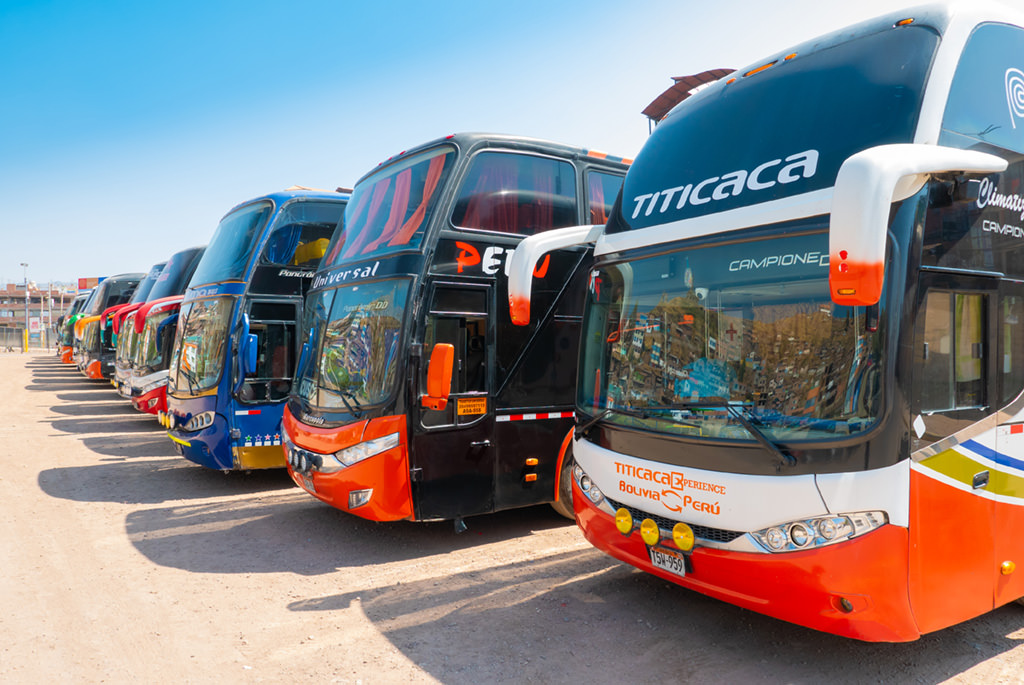
Buses in Peru are usually of very good quality, where you can either choose a regular seat or an Ejecutivo — this is a little more pricey but has a 180° reclining seat. Some of the best Peruvian bus providers include Oltursa and Cruz del Sur, although you can also find cheaper ones within the terminal (they don’t market themselves online).
When it comes to travelling around Peru, it’s best to split the South American nation into two different parts:
The south is the more popular area which includes Cusco, Lima and Lake Titicaca, and I highly recommend using the bus to get around here. This is because the providers are reliable, and also as there are many frequent departures daily. You can check them and pre-book your tickets at RedBus or at 12Go.
The north is more difficult, given it’s less touristy and remote in many places too. You’ll most likely have to book buses within the terminal (they’re more sporadic) or even take flights between different areas.
The major downside with using buses in Peru is that distances can be huge, so you’ll need to get used to many 8+ hour buses along your journey.
Some trips can even be as long as 24 hours(!), such as from Lima to Cusco as you navigate through the spiralling Andean peaks along the way.
How to book a bus in Peru
There are two main ways of booking buses in Peru.
The first option is using online sites like RedBus or 12Go, where you can easily pay with your card and get tickets sent to your phone. Not only is it easier as everything is clearer and in English, you’ll also be able to plan in advance and arrive at the terminal without needing to rush.
The disadvantages of this option are that you’ll pay more, and also not have access to several companies who don’t market themselves online (which means you’ll have fewer routes and timetables available).
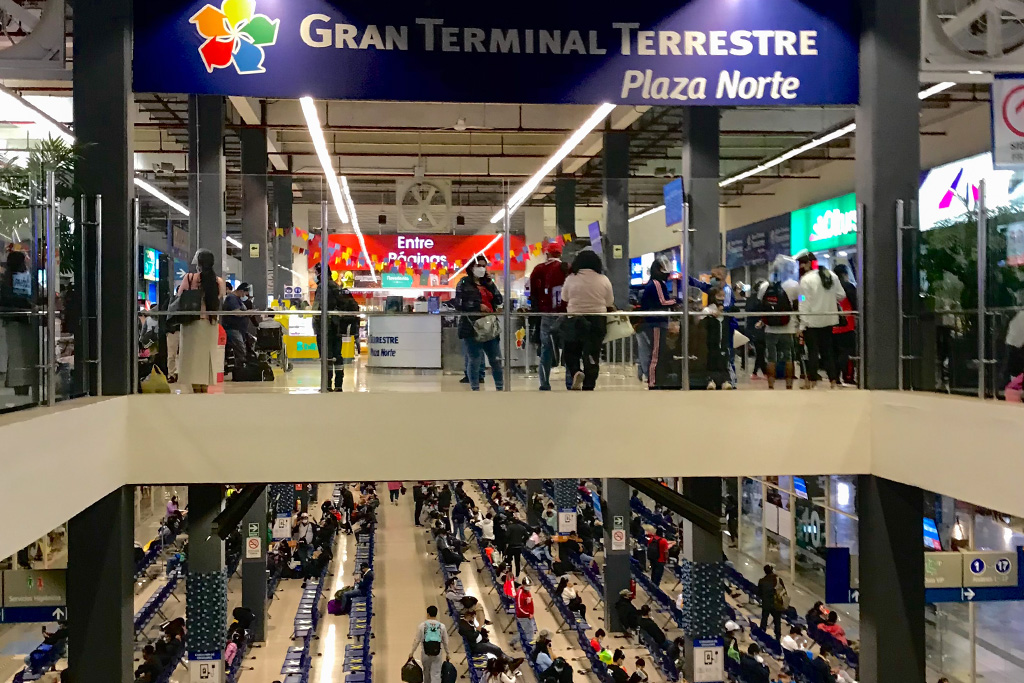
The second option is to buy your ticket at the bus terminal. There will be many counters, so you’ll need to head to a counter that serves your destination. This is the cheapest option by far and if your times are flexible then the costs can be further reduced.
However, for this method, you’ll need to know some Spanish (unless you are fine improvising) and Peruvian bus terminals can get quite wild and hectic at times.
Here are some Spanish phrases that can come in handy:
I want to go to Cusco = Quiero ir a Cusco
How much is it? = ¿Cuanto cuesta?
Do you offer luxury seats? = ¿Tienes asientos ejecutivos?
How many hours is the trip? = ¿Cuántas horas es el viaje?
Plane
Travelling by air in Peru certainly has its perks, and is an ideal option for those who are short on time or don’t mind spending a bit more for extra comfort.
Given this country’s varying and wild landscapes, it often means that roads have to wind around mountains or pass through dense portions of jungle. Whilst it’s definitely an experience in and of itself, it can easily rack up hours of travel time.
Flying is definitely ideal for reaching destinations further afield, including on routes such as from Lima to Cusco, Lima to Piura, or Lima to Tarapoto. The cost of flights in Peru won’t have to break the bank either and can be highly worth the time savings.
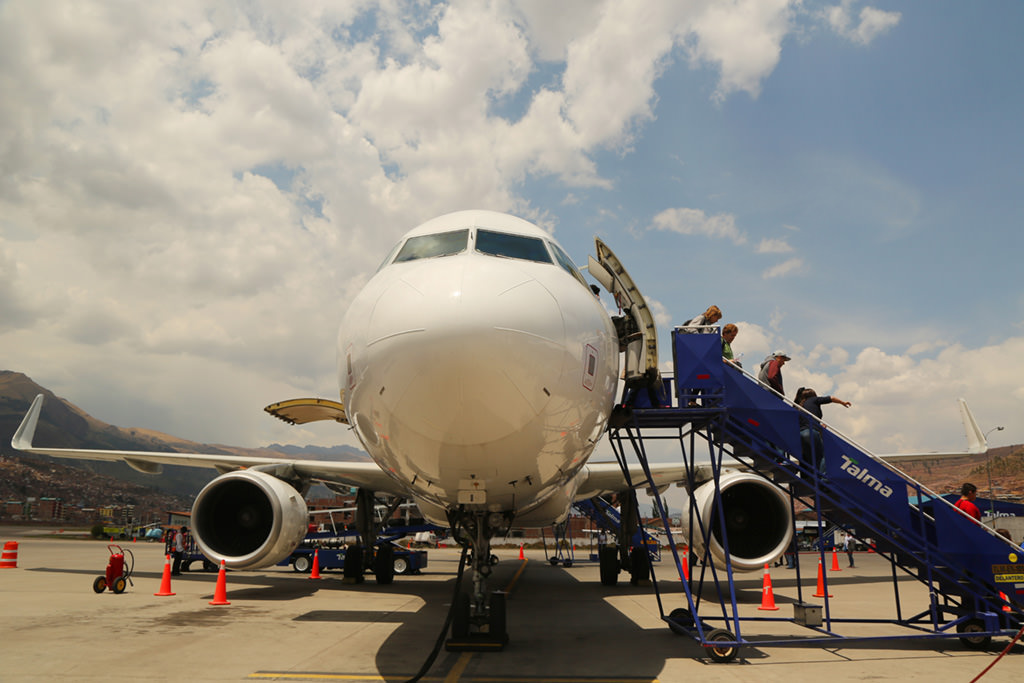
The classic example is when heading from Lima to the imperial city of Cusco. The bus will cost between $30-40 USD (120-140 Soles), and also take as long as 24 hours to arrive. However, the flight can sometimes cost as low as $40 USD (150 Soles, including baggage), which is more or less the same price! And that’s without mentioning the 15+ hours of travel time saved either…
In some cases, planes are the only practical way to reach a destination. Those heading to Iquitos will have to take a plane, or otherwise need to spend multiple days using public buses and also a boat too!
It’s important to mention that whilst you can find flights between certain Peruvian cities (such as Arequipa, Ica or Piura), the majority will need to stopover in Lima.
Some of the best airlines in Peru are LATAM and SKY Airline, and you can check itineraries here on SkyScanner.
PeruHop
Lastly, we come to the more touristy (and organised) transportation option.
The private bus company PeruHop has become an increasingly popular option, seen as the best of both worlds between using public buses or travelling with a tour company.
Unlike standard tours where you have a fixed itinerary that must be followed, PeruHop is much more flexible in that once you’ve bought your pass you can travel on any chosen date.
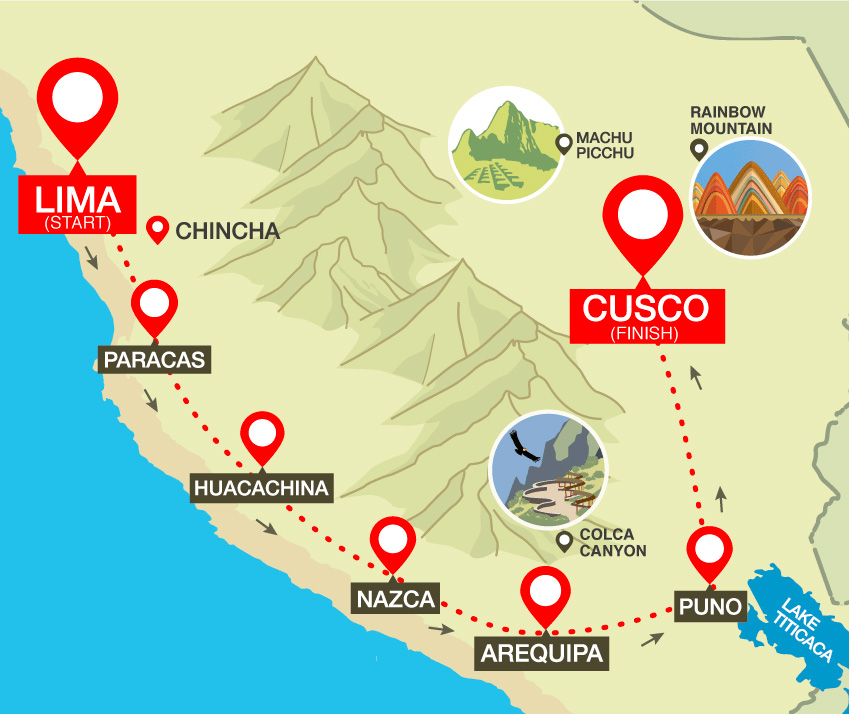
As the name goes, you can simply hop off and hop on whenever you’re ready to continue your adventure. It also takes out the guesswork of heading to a bus terminal, where you’ll need a decent grasp of Spanish and also a somewhat tenacious attitude to deal with browsing through different bus companies.
You can check out PeruHop’s extensive range of passes here, with most beginning in Lima (although you can start anywhere along the route) and heading down to Lake Titicaca and even into Bolivia. Prices start at $79 USD, but it’s worth comparing with the local bus costs before you book.
A disadvantage of PeruHop is the higher cost versus public buses. Those looking for a more local and authentic experience may also want to think twice, given that it feels much more Gringo and touristy. Finally, PeruHop only serves the southern portion of Peru.
Train
Whilst other countries have an extensive train network to get around, Peru isn’t one of these. However, there are certain areas where using the train will be advantageous.
One of the biggest is when heading to Machu Picchu. When heading from Cusco, your bus will stop off at the railway, where many travellers walk along the tracks to the town of Aguascalientes. You can instead opt to take the scenic train from Cusco to Aguascalientes, whilst breathing in all of the incredible sceneries along the way.
There are other trains used throughout Peru too, which are rarely used by tourists, though can be a good option for the more adventurous traveller.
These include the service from Cusco to Puno, which is provided by PeruRail. The other one is from Lima to Huancayo (Ferrocarril Central Andino), where you’ll pass by many mesmerising mountain sceneries along the way.
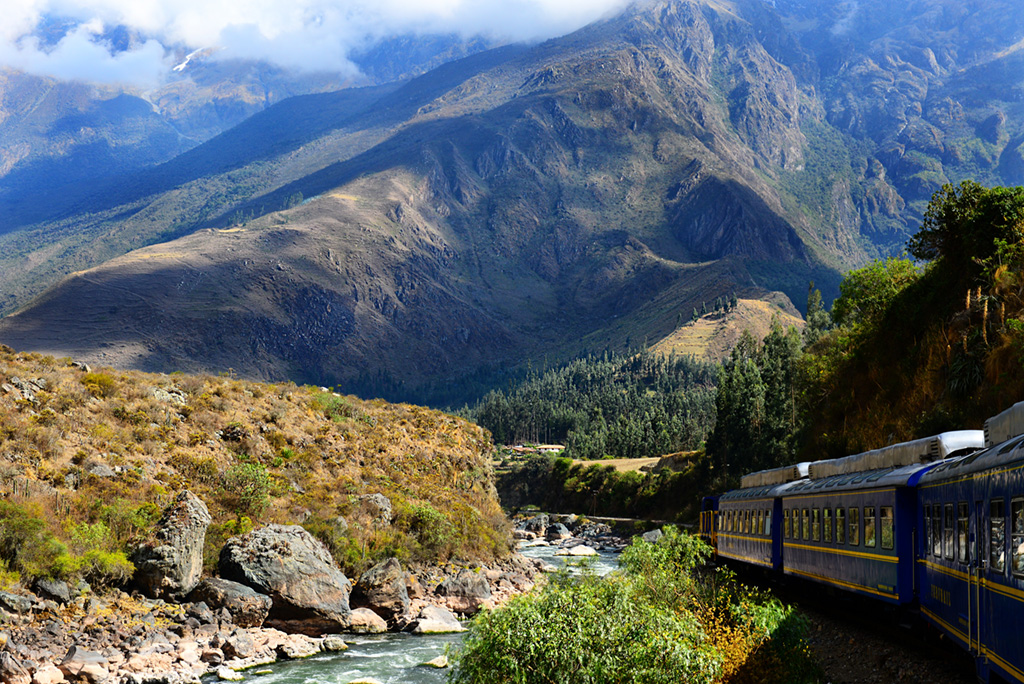
Local Transport for short distances
Once you’ve arrived in a new city or destination, you’ll now need to know how to make your way around. Through my experience, I’ve found there to be 5 main ways of exploring Peruvian cities and their nearby regions.
Taxis
Once you arrive at a new city or town after a long bus ride, it’s best to use a taxi to get to your accommodation. Not only is it the safest method of all (given you and your belongings are riding private), but you’ll also be travelling directly to your destination.
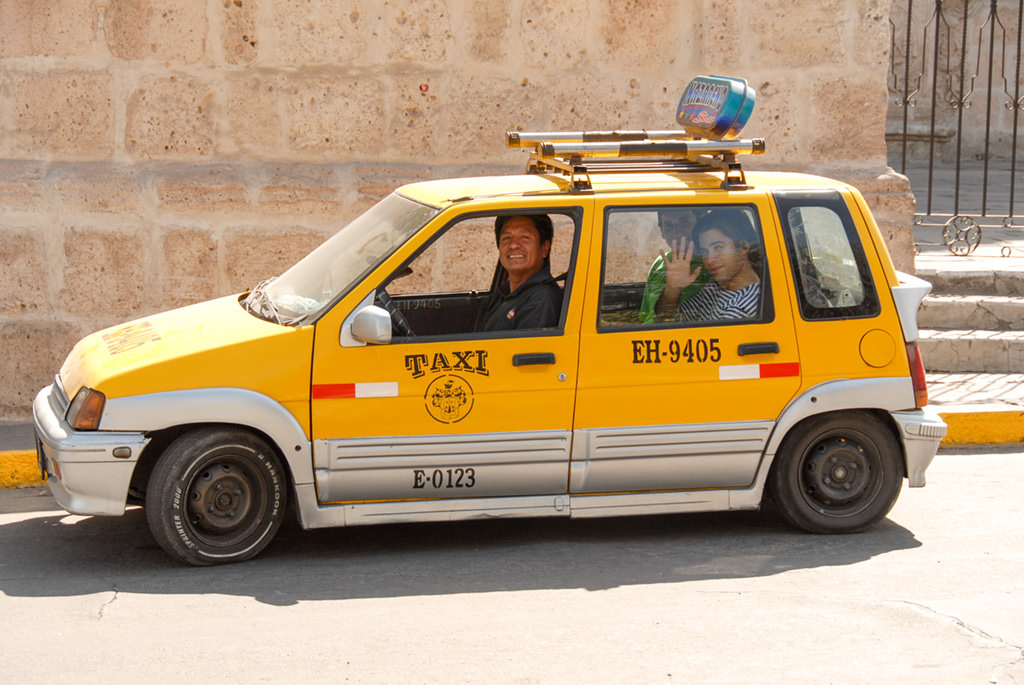
Of course they can be expensive, and unfortunately some drivers have been known to increase prices for unsuspecting tourists. It’s always good to ask a kiosk at a bus terminal or airport how much a route costs, or even a local who may have a good estimate.
If you are already in the city, I would recommend using Uber instead to get around, in particular at night.
Mototaxis
Personally for me, the mototaxi is the undisputed king when it comes to travel in Peru!
This three-wheeled rickshaw is not only a fraction of the price of a taxi. You’ll also be alone which alleviates any safety worries (or missing your stop on the busy colectivos).
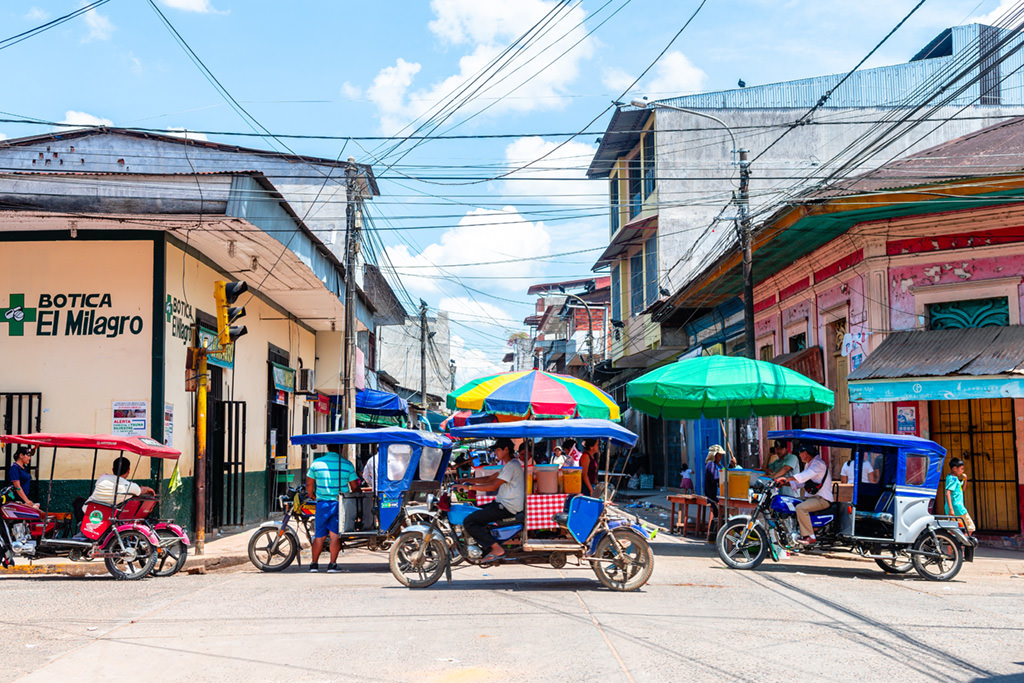
Whilst they’re not found in every city (usually the bigger ones like Lima and Arequipa do not have them), those that allow mototaxis see them flying around the streets in hordes. You only need to flag down an available driver, let them know where you’re heading (best to agree the price before setting off) and then head off for what is quite an enjoyable ride.
The only disadvantage is that the ride can be quite bumpy, with some even missing doors (common in hotter areas like Iquitos). However, that’s all part of the adventure at the end of the day!
Colectivos
Next we have the colectivos, which are like vans or small buses that run along the roads. These are also pretty cheap, and are also reliable given there’s so many of them (just don’t expect any timetables!).
All you need to do is ask your accommodation or a local where you’re heading, and they’ll let you know which one to take. Once on, let the driver know your stop and they should stop for you (although you should keep checking on maps just to be safe).
Colectivos are also the best way of getting out of cities and exploring the nearby regions. They connect with smaller towns, and often have stops at major tourist destinations along the way (such as a hiking trail or Incan site).
Just make sure to bring small change with you before boarding, since they are always on a hectic schedule and also don’t usually carry large amounts of cash.
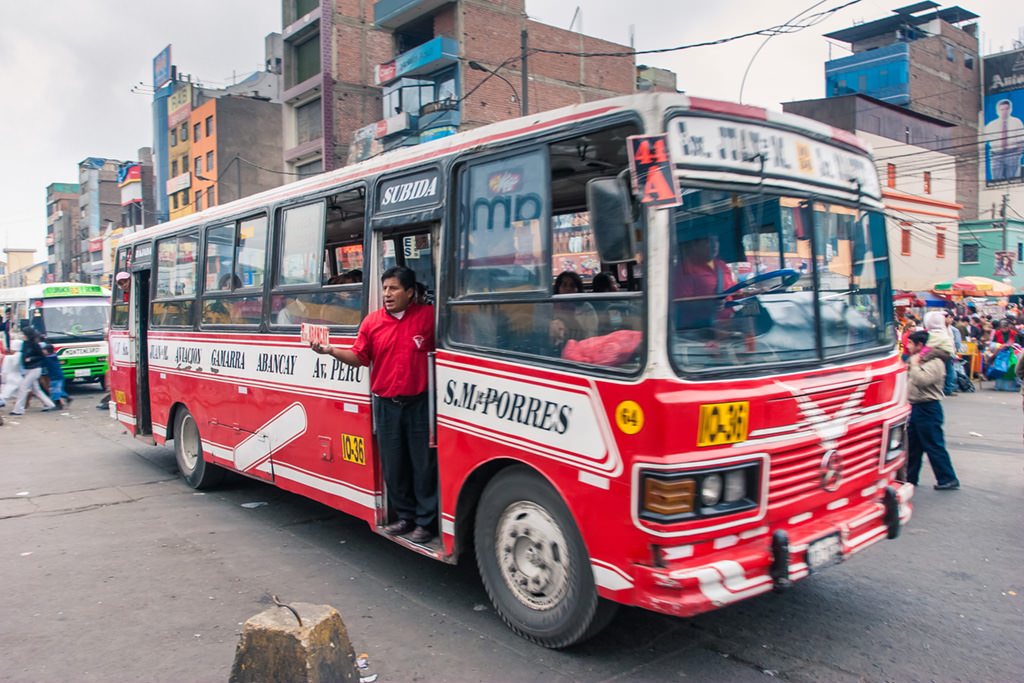
Buses and local transportation
In the bigger cities, you’ll also find other types of transport methods. The buses (which are bigger than colectivos) are by far the cheapest way of getting around, although it tends to be a much more hectic experience.
Not only do you need to know exactly which one to hail (again knowing some Spanish will help), however you’ll also need to keep an eye on when to get off too. Some of the bigger cities also have their own unique methods which can come in handy.
Those in Lima can ride the Metropolitano, which is similar to a metro with various stops, however instead uses buses to navigate the city. It’s quite reliable since they use their own lanes, so you are much less likely to get stuck in traffic.
You can buy a card at any station, and simply top-up for any extra rides you’ll need. Whilst these options are ideal for small trips in cities, I don’t recommend them for those arriving with all their belongings since they can get overly packed (which makes it ideal for opportunistic thieves).
Uber and similar apps
Uber is the usual ride-hailing app in Peru and can be found in many cities or towns.
It’s by far one of the safest ways of getting around, given all drivers are certified and registered. You’ll also be able to relax, since it’s impossible to get ripped off (with the costs of routes already pre-determined on the app).
There are also other apps like inDrive which are also worth a try. With this one you can select your price for a route, then you simply wait until a driver accepts. Of course it can be hard without the local know-how (for example how much a certain route should cost), so it’s best to use this one with the guidance of locals.
My Travel Tips for Peru
Tip 1: Pick up some Spanish before leaving
Whilst in other countries you can get away with finger-pointing and some Spanglish, Peru is going to be much more of a challenge.
Even learning just some basics on Duolingo (or taking private lessons online) can do wonders for your vocabulary, and also make your experience a much more enjoyable one too.
Locals will be more open to helping those who put effort into speaking their own language, however don’t think that you need to be a pro. Some basic phrases can go a long way.
In the more remote areas, natives may prefer to speak Quechua or other indigenous languages. Of course, there are now translation apps and even bus routes displayed online, so a determined traveller can still find their way around without the local lingo.
Tip 2: Booking transport online
While not always possible in the more remote areas, you’d be surprised just how many bus routes can be booked online in Peru.
Websites like 12Go and RedBus do a fantastic job at listing different itineraries, as well as the various companies that serve them. This is definitely a good option for those who want to avoid hassle or with a strict itinerary.
Keep in mind many of the cheaper bus routes you’ll find in the bus terminal won’t be found online, however.
Tip 3: Stock up before your trip
On long trips, it’s best to buy lots of snacks, food and water at a local shop or the bus station prior. Whilst you will get some vendors hop on and off from time to time, it’s still better to come prepared.
Another important consideration is purchasing Coca Leaves or Soroche Pills (altitude sickness medicine). These are especially needed when travelling around the high-altitude mountainous regions of the Andes, such as around Cusco or Huaraz. They can help alleviate headaches or nausea which are common when travelling at these higher altitudes.
Some links may be affiliate links, meaning I may earn commission from products or services I recommend. For more, see site policies.
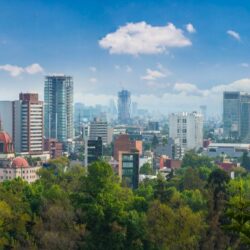





0 comments
Leave a comment
Your email address will not be published. Comments are manually moderated.